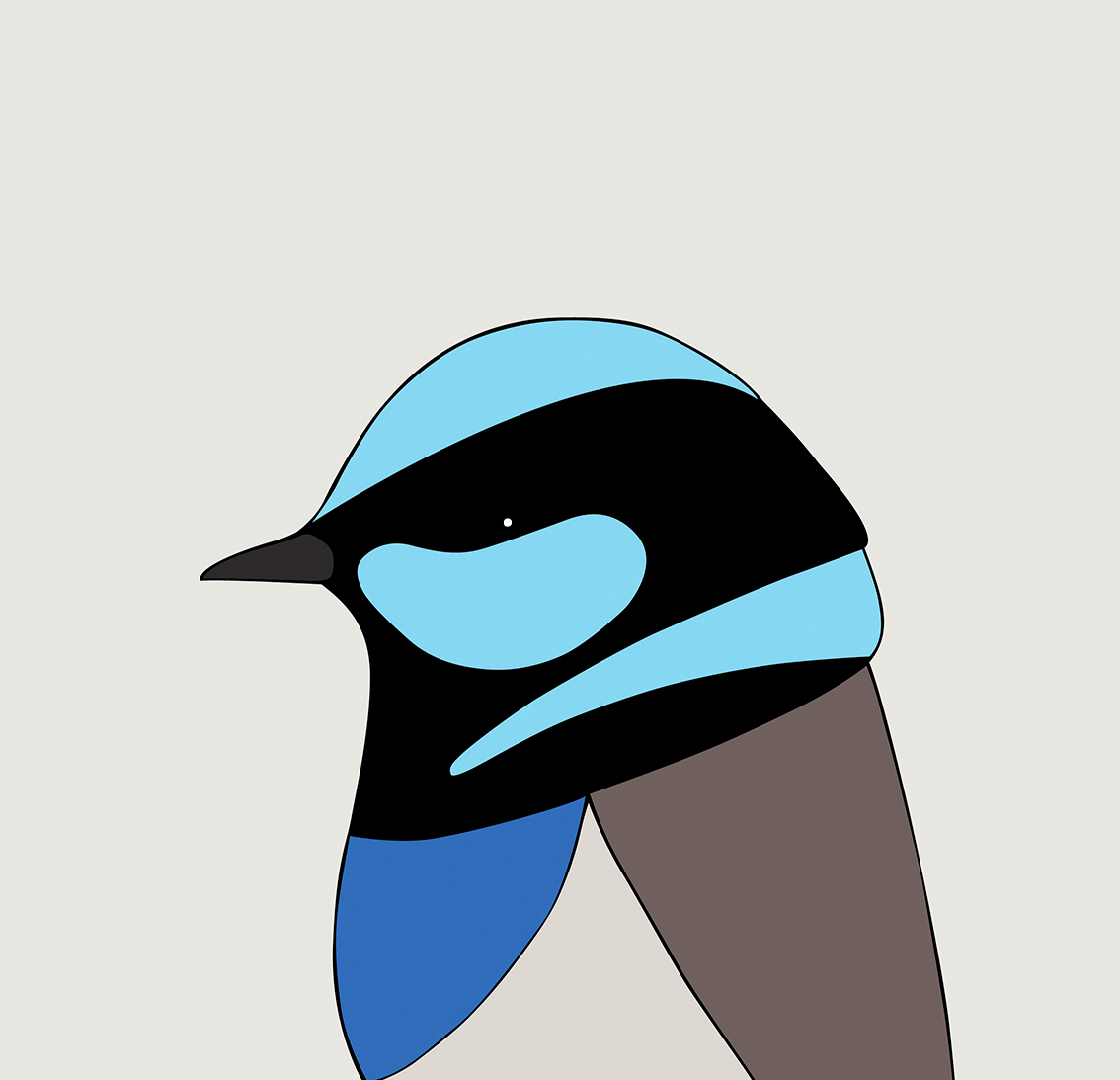Superb Fairy-wren

Who am I?
I’m one of Australia’s favourite, and most recognisable, characters. Admit it, you’re obsessed with me.
You’ll see me hopping around with my all-brown female partner and our troop of brown young ones.
In winter, I lose my bright blue feathers and opt for a sensible grey-brown. You’ll still know it’s me, because my legs and bill will be black, unlike my girlfriend and our young ones, who have pinky-brown legs, bills and eye-rings. Oh, and I keep a blue tinge to my tail.
My favourite environment has plenty of dense bushes to hide in, clumped around areas of grass and leaf litter so I can hunt my tiny insect prey.
Find me in the city!
Try me out at home

- Scan the QR code
- This will open the Instagram filter
- Point your camera to an open space
- Tap to place me in the space, pinch to change my scale or walk around me, I’m 3D!
- Take a photo or video and share your vision for a wilder neighbourhood on Instagram using #wildheartmelb (if in Melbourne) or #wildheartcities if elsewhere
Meet me
See through my eyes
Listen to my world
Record-a-wren for the Superb City Wrens project
Become a ‘wren watcher’ and help scientists learn where superb fairy-wrens are living and feeding in inner Melbourne. Your sightings will be used to guide habitat restoration in the city, and track its success.
It’s easy to take part!
- Pick one of 50 sites around Melbourne’s inner north and west
- Watch for 15 minutes and record any small birds you see
- Log your sightings in the Superb City Wrens project on BioCollect or iNaturalist.
Everything you could ever want to know about the project, and about Melbourne’s Superb City Wrens is on superbcitywrens.com and you can join a community of city wren-watchers here on Facebook.

How to welcome wrens into your neighbourhood
Superb Fairy-wrens can turn up in some surprising places – if the right habitat elements are there!
Fairy-wrens thrive in areas with lots of dense, bushy cover, but they’re not fussy about the species of plant – a mix of long, grassy tussocks and very dense, even spikey bushes.
They need these bushy areas to be mixed with more open areas of grass and leaf litter where they can hop about in search of their insect prey. You will often see them foraging on lawns near the edge of a bunch of bushes, ready to flit back in should a predator turn up. Flowering ground-covers, fallen branches and rocks give their prey more places to find food, mate and grow, ensuring there are plenty of little things for the fairy-wrens to eat.
Superb Fairy-wrens only have little wings and keep close to home, so ready access to water for drinking and bathing is an important component of any wren-friendly garden. Wrens are more likely to visit water dishes that are placed under or right next to the bushes they use for cover. This way they can drink and bathe away from predators and larger bullying species, which prefer to use raised bird bath. Use a shallow bowl with a lip for standing on, or place rocks in the water for the wrens to stand on.
Importantly, if you provide water you should replace it weekly to keep it clean and keep mosquitos from breeding in it. Remember that the wrens rely on it to be filled, even when you are away. Even better – encourage your neighbours to put water out in their own gardens so the local wrens and other wildlife have multiple options, especially in hot weather. A permanent pond with shallow edges is even better – add a small fountain or waterfall to keep the water moving, which keeps the water fresh and mozzie free!
More about gardening for birds here.
Of course, Fairy-wrens need to find their way to your garden and to do that they need a network of council and home gardens to use as stepping stones to get there. Encourage your local council to plant more wren habitat, allow constituents to plant out their nature strips and start their own Gardens for Wildlife initiative to support local households to plant their own! There are also non-government projects you can get involved in, like the amazing Heart Gardening Project, which is helping grow a corridor of nature-friendly gardens all the way from the Botanic Gardens to Westgate Park!



A collaboration between Remember The Wild and Eggpicnic.
Supported by the City of Melbourne.





